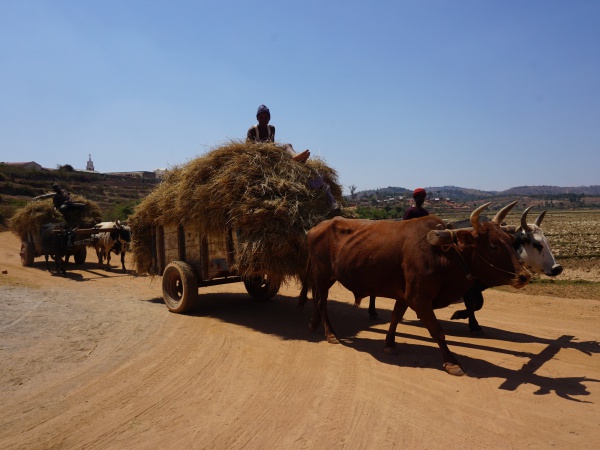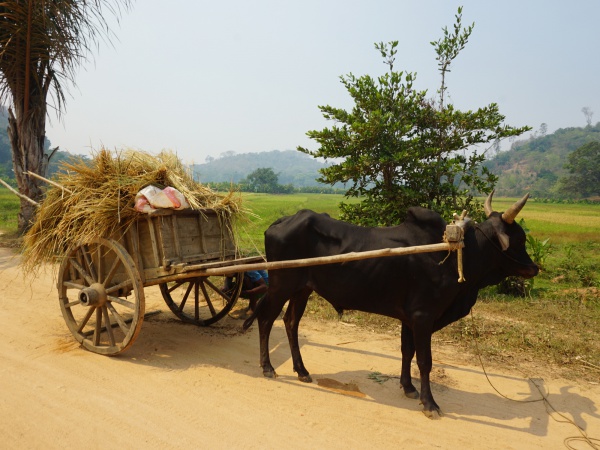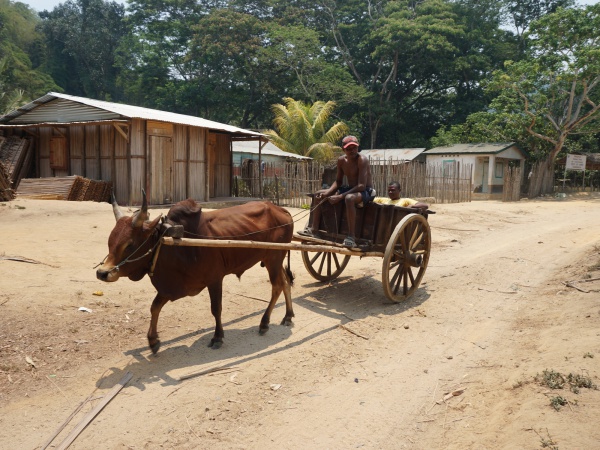Difference between revisions of "Zebu cart"
CampMaster (talk | contribs) |
CampMaster (talk | contribs) |
||
| Line 1: | Line 1: | ||
| − | '''In the early hours at the Sambirano crossing, there can sometimes be a bit of a traffic jam, caused not by motor vehicles but by ox-powered carts transporting crops from the countryside into the central marketplace of Ambanja.''' | + | '''In the early hours at the Sambirano crossing, there can sometimes be a bit of a traffic jam, caused not by motor vehicles but by ox-powered carts transporting reshly harvested crops from the countryside into the central marketplace of Ambanja.''' |
[[File:Zebu cart 001.jpg|600px]] | [[File:Zebu cart 001.jpg|600px]] | ||
Revision as of 18:52, 16 August 2024
In the early hours at the Sambirano crossing, there can sometimes be a bit of a traffic jam, caused not by motor vehicles but by ox-powered carts transporting reshly harvested crops from the countryside into the central marketplace of Ambanja.
These humble two-wheeled carts remain as relevant today as they were 500 years ago, providing an indispensable form of transport among people and in distributing their agricultural crops.
There are dozens of workshops in and around Ambanja, as well as innumerable zebu carts in the town, region, and across Madagascar.
A typical workshop in Ambanja run by Mr Theodore who employs six workers, produces about 50 carts per year in all the same design model. One cart will take about one week to produce and costs 1,800,000 (about USD 400).
Thanks to the tradition of these eco-friendly ox-powered vehicles, cars and pollution are kept to a minimum.






